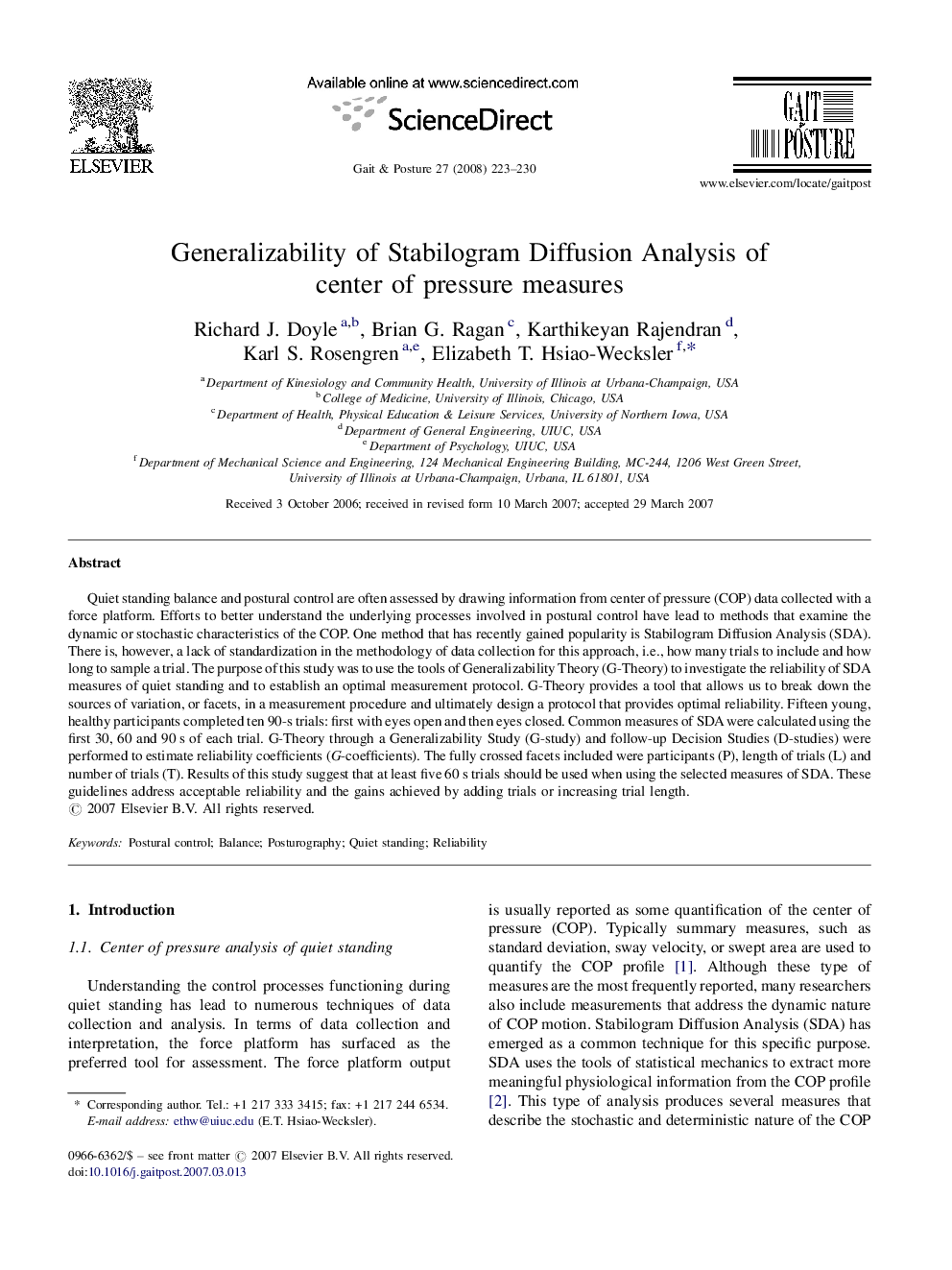| Article ID | Journal | Published Year | Pages | File Type |
|---|---|---|---|---|
| 4058365 | Gait & Posture | 2008 | 8 Pages |
Quiet standing balance and postural control are often assessed by drawing information from center of pressure (COP) data collected with a force platform. Efforts to better understand the underlying processes involved in postural control have lead to methods that examine the dynamic or stochastic characteristics of the COP. One method that has recently gained popularity is Stabilogram Diffusion Analysis (SDA). There is, however, a lack of standardization in the methodology of data collection for this approach, i.e., how many trials to include and how long to sample a trial. The purpose of this study was to use the tools of Generalizability Theory (G-Theory) to investigate the reliability of SDA measures of quiet standing and to establish an optimal measurement protocol. G-Theory provides a tool that allows us to break down the sources of variation, or facets, in a measurement procedure and ultimately design a protocol that provides optimal reliability. Fifteen young, healthy participants completed ten 90-s trials: first with eyes open and then eyes closed. Common measures of SDA were calculated using the first 30, 60 and 90 s of each trial. G-Theory through a Generalizability Study (G-study) and follow-up Decision Studies (D-studies) were performed to estimate reliability coefficients (G-coefficients). The fully crossed facets included were participants (P), length of trials (L) and number of trials (T). Results of this study suggest that at least five 60 s trials should be used when using the selected measures of SDA. These guidelines address acceptable reliability and the gains achieved by adding trials or increasing trial length.
